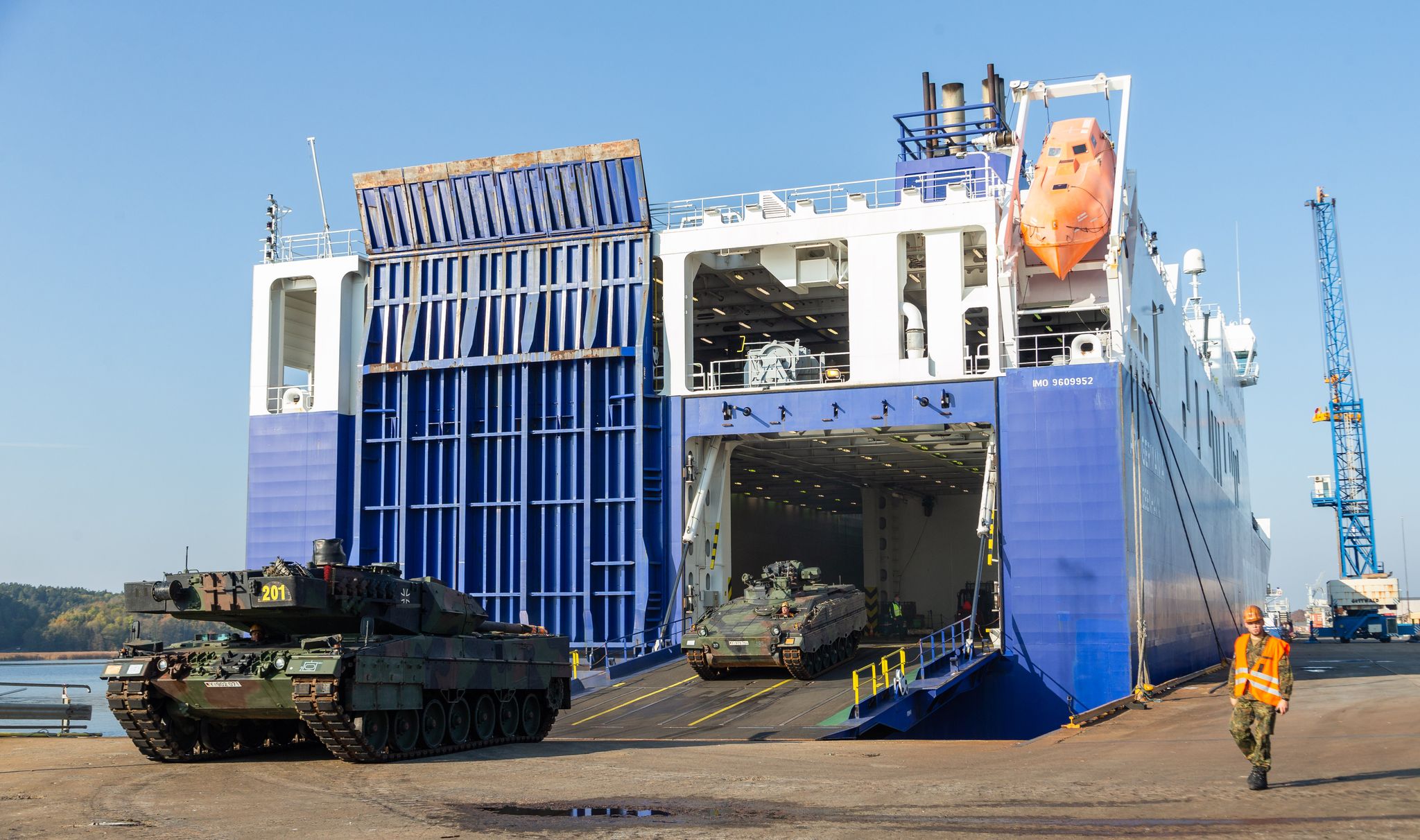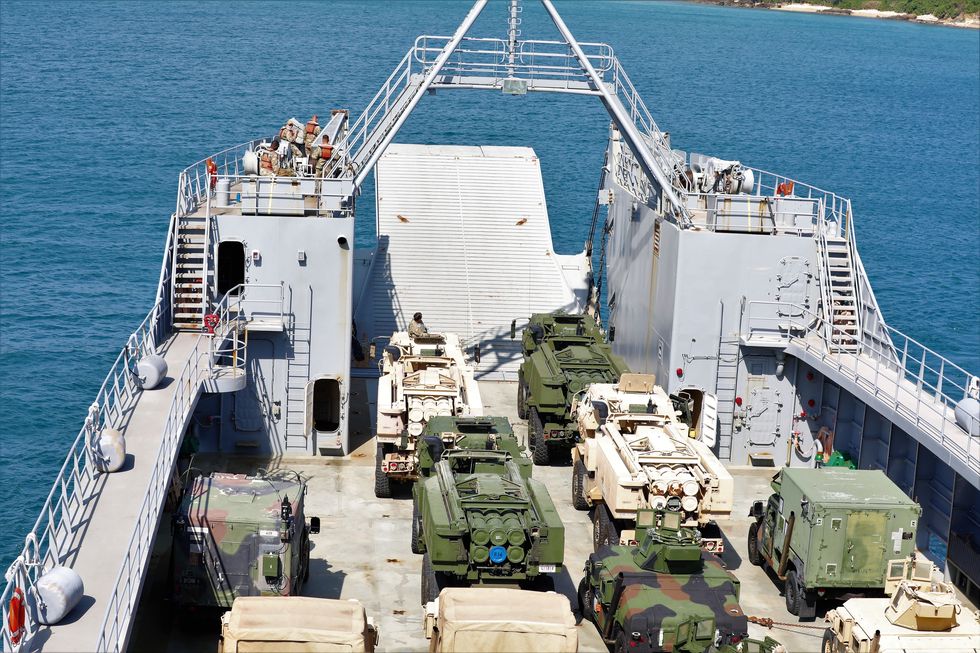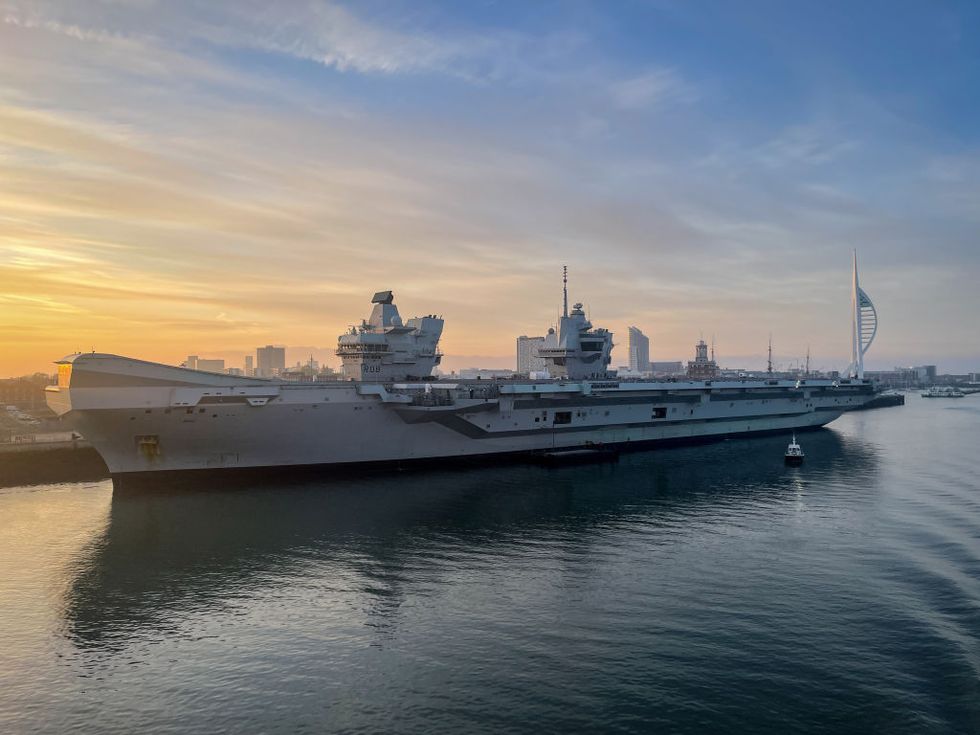One of the most unusual facts about the U.S. Army is that it has its own navy. The U.S. Army maintains more than 100 ships designed to support tanks, infantry, and other ground forces in and around water, ensuring that lakes, rivers, and even oceans are not significant obstacles.
The Army, although composed of largely unarmed, small ships, is actually one of the largest “navies” in NATO.
Expeditionary Warfare
The U.S. Army is a planetary army and must be prepared to execute combat operations nearly anywhere on the globe. Wars also tend to take place where people live, and according to the U.N. about forty percent of the world’s population lives within 60 miles of a coastline, whether it be on rivers, lakes, or oceans. All of that makes water a significant reality for the Army.
With its 67-ton Abrams tanks and 40-ton Bradley infantry fighting vehicles, the Army is ill-suited to cross large bodies of water. Although the service has a variety of bridging equipment capable of constructing temporary bridges across trenches and rivers, water obstacles wider than 1,000 feet are beyond the capabilities of most Army units. While the Marines have Navy amphibious landing craft and hovercraft to call on, the Army is on its own.
The solution—one that has existed since World War II—is to give the Army a miniature navy of its own. Army Watercraft Systems (AWS) exists to turn bodies of water from obstacles to opportunities, allowing the Army to cross water obstacles an adversary may be led to believe is impassable. The boats number 132 ships in all, including frigate-sized logistics support vessels, landing craft capable of transporting tanks, and tugs.
According to the Department of Defense, the soldiers manning them prefer to be called “army mariners” instead of sailors.
The Army’s Naval Fleet
The biggest part of the Army’s fleet are the transport ships. The largest of them are the eight General Frank S. Besson-class logistics support vessels (LSVs). At 273 feet long and 4,000 tons displacement, each is the size of a Navy frigate. Each LSV can haul up to 2,000 tons—the equivalent of 21 M1 Abrams main battle tanks or 25 (50 double-stacked) 20-foot shipping containers—up to 5,000 miles.
Next in line are the Army’s landing craft, utility (LCU) vessels. LCUs allow the Army to move troops and equipment into areas with damaged ports or otherwise austere port facilities, and over unimproved beaches. Each of the 31 LCU-2000s is 135 feet long and can carry up to 170 tons of cargo. LCU-2000s were at one point able to carry up to three tanks, but the growing weight of the M1A2 Abrams tank probably means that the boats can carry only two tanks at a time.
Another boat, the new Maneuver Support Vessel (Light), is replacing the older, Vietnam-era LCM-8. The Army plans to buy 36 MSV-Ls, each of which can carry up to one Abrams tank.
Finally, the Army has several dozen small craft designed to act as connectors between cargo ships known as “Ro-Ros,” named for their ability to allow tanks and armored vehicles to roll directly on and off the ship and shore. Ro-Ros are huge vessels up to 700 feet long, and their draft may not allow them to get right up to a shoreline and discharge their cargo. In the event that happens, the Army’s tugs, derricks, and ferries are prepared to lay a floating causeway from ship to shore, allowing vehicles on the transport ships to drive across.
The Fleet in Action
How might the Army use its ships to support its ground forces? In one scenario, the U.S. Army is advancing up the Korean peninsula, hugging the coastline, heading to Pyongyang. The army, closing in on the adversary’s capital, encounters particularly stiff resistance. The solution: an air assault by light infantry over the Yellow Sea to a landing zone on the coastline that outflanks the enemy position. Ships like the LCU-2000 and MSV-L could load up with supplies in a South Korean port and then support the air assault force by sea, landing supplies and heavier vehicles like the M10 Booker combat vehicle.
Another scenario: the U.S. Army must reinforce the island of Gotland, in the Baltic Sea, to protect it from Russian helicopter-mobile troops. A pair of Besson-class logistics support vessels transports a squadron of Stryker infantry combat vehicles from Germany-based 2nd Cavalry Regiment from the port of Kiel to Gotland. The Army operation allows the Army to maneuver to the island while Navy and Marine Corps conduct a separate joint operation farther forward.
In both scenarios, the Army is using its boats to support an Army mission, land warfare, without duplicating the Marines’ mission of amphibious warfare.
A Fleet for Ants?
The Army’s fleet of ships is bigger than it seems. The fleet consists of 132 ships of all types, with a total displacement of about 60,000 tons. That’s 60 percent of a Ford-class aircraft carrier, or about six guided-missile destroyers.
How does the Army’s fleet stack up to foreign navies? Sixty-thousand tons is equivalent to the U.K.’s Royal Navy aircraft carrier HMS Queen Elizabeth. It’s larger than the entire Royal Navy in sheer hulls, though that is a decidedly sketchy metric by which to measure military vessels. The Royal Navy is much larger in tonnage, and with its submarines, destroyers, frigates, and offshore patrol vessels it has the clear advantage in hulls, with armament heavier than a M2 .50-caliber machine gun.
The Takeaway
It may seem strange that the U.S. Army has more than 100 boats in its inventory, but an expeditionary army needs the ability to maneuver across all kinds of terrain—even water. Not every country, even the affluent NATO nations, has an army that has a navy. America not only has a navy that has an army—the Marines—but also an army that has a navy.

Kyle Mizokami is a writer on defense and security issues and has been at Popular Mechanics since 2015. If it involves explosions or projectiles, he's generally in favor of it. Kyle’s articles have appeared at The Daily Beast, U.S. Naval Institute News, The Diplomat, Foreign Policy, Combat Aircraft Monthly, VICE News, and others. He lives in San Francisco.


















